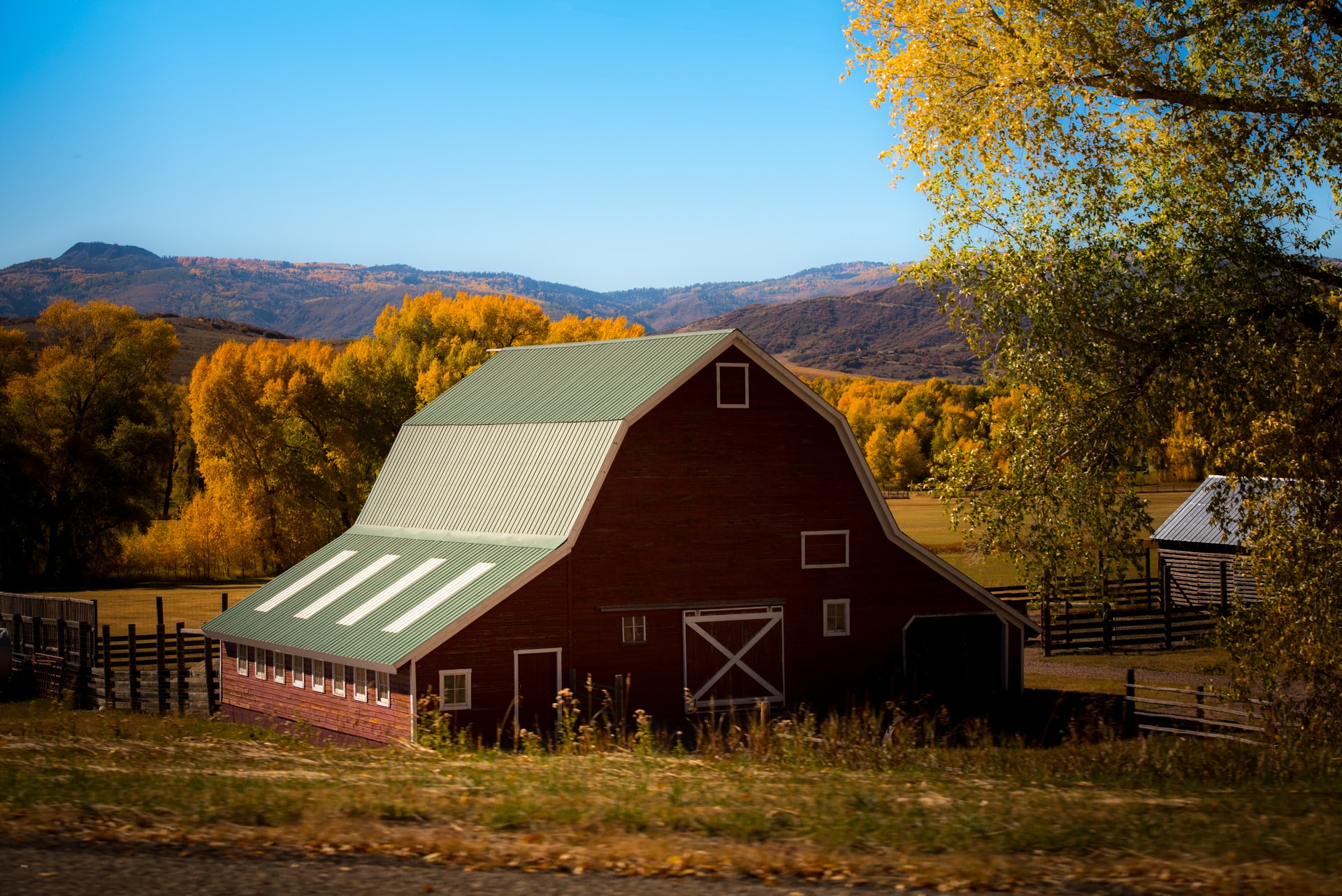When constructing a pole barn, you now have the option of going with a metal structure or a traditional wood pole barn. Both have their own advantages. The right one for you will depend on your needs, goals, site and budget. It’s essential to have all the facts on both types of pole barns so that you can make an informed decision.
Pole Barn vs. Metal Building
The primary (and obvious) difference between a wood and metal pole barn is the materials used in the construction. But there are also differences in how these buildings are constructed and your options for columns and layouts.
- A traditional pole barn has wood poles that are set 96” apart. The framing is anchored in the soil. Barns of this type can be up to 120’ wide without posts (clearspan).
- A metal pole barn has steel columns that are set 30’ apart. The framing is anchored in concrete with metal bolts. Metal pole barns can be hundreds of feet wide without posts or columns.
The biggest concern with a wooden pole barn is that the framing is anchored in soil instead of onto a pier or concrete pad. This means that the framing is subject to movement as the soil conditions change. If the ground shifts, the poles can move and interfere with the structural integrity of the building.
That being said, both metal and wood pole barns have advantages that need to be considered.
Metal Pole Barn Advantages

Metal pole barns have many benefits, including:
Durable
Metal pole barns are highly durable. Because columns are set in concrete with metal bolts, there’s no need to worry about the columns shifting over time.
Metal pole barns offer superior structural stability, especially when it comes to harsh weather. In addition, steel barns can be constructed to withstand heavy snow loads, ensuring that your structure will last season after season.
Overall, steel will have a longer lifespan compared to wood. You can easily get decades of use out of your barn with proper care and maintenance.
Quick Construction
Metal pole barns are quick and easy to construct. In fact, many metal barn manufacturers offer DIY kits that walk you through the steps of building the barn yourself.
In many cases, it takes no more than three weeks to build a metal pole barn.
Weather, Fire, Pest and Rot Resistance
Metal buildings, in general, are better able to withstand the elements and aren’t susceptible to many of the same issues wooden structures face.
- Steel barns can withstand extreme weather conditions, including hot summers and freezing winters.
- Metal structures are more fire-resistant compared to wood structures. Fire resistance can save lives (including the lives of horses and livestock) and reduce the risk of costly damage.
- Wood barns are susceptible to rot. Gaps and holes in construction can lead to leaks, which accelerates the process of rot and decay. Oxygen and moisture can contribute to mold and mildew growth as well.
- Metal buildings aren’t susceptible to pest damage. However, with a traditional pole barn, termites and other wood pests can cause structural damage and increase costs of maintenance if you have to hire an exterminator.
Wood Pole Barn Advantages
Metal pole barns certainly have advantages, but wood barns also have some benefits.
Great for Insulation
While both metal and wood pole barns can be effectively insulated, wood is a little bit easier to work with. Wood does not transfer heat, while steel does. This makes it easier and more efficient to insulate a wood pole barn.
Better Indoor Air Quality
Some research suggests that wooden structures have better overall indoor air quality compared to other construction materials. That’s partly because wood is a natural product. As a result, wood has fewer toxic emissions than other types of materials.
What About Cost Differences?
Wood and metal pole barns are both less expensive than other types of buildings. No matter which one you choose, you’re going to save money compared to a typical stick-built structure. However, there are some significant cost differences between these two materials.
Wood Pole Barns Have Lower Upfront Costs
In many cases, a wooden pole barn will have lower upfront costs compared to a metal barn. That’s partly because the poles are placed directly into the soil. A metal barn’s frame is anchored in concrete with metal bolts, and this adds to the overall cost of construction.
Wood is also, generally, less expensive than steel, although the market can change.
Metal Pole Barns Have Lower Overall Costs
Metal structures are a cost-effective option, especially when lumber prices are high. Typically, metal pole barns cost more upfront compared to wood barns, but they’re overall less expensive.
Wood pole barns require a lot of maintenance and take longer to construct. With a wood structure, you have to worry about making more frequent repairs, rot, pests and other issues that may arise. Additionally, if soil conditions change and the poles start to shift, you may have to do some serious, costly repairs or rebuild the structure entirely.
Overall, metal pole barns are less expensive to maintain, which offsets the higher upfront costs.
Both metal and wood pole barns are great additions to any property. These clearspan structures offer plenty of space for storage or whatever you may need. Whether you choose wood or metal ultimately comes down to your location, your budget and your personal preferences. But bear in mind that metal structures can also be made to look just like their wood counterparts.
